The term ‘asbestos’ is a blanket term that actually describes six completely unique substances. All six (actinolite, anthophyllite, tremolite, crocidolite, amosite, and chrysotile) are part of the amphibole and serpentine mineral families. The six different types actually describe the unique fibers found in asbestos. According to the TSCA (Toxic Substances Control Act), they are all classed as asbestos.
The EPA (U.S. Environmental Protection Agency) adopted the TSCA classification in 1976. Since then, some 52 different countries have banned all six types of asbestos. However, the U.S. Bureau of Mines has since recognized many hundreds of other minerals that are like asbestos, but these are not yet regulated or restricted. These include traconite and erionite, which can both cause serious health issues.
1. Chrysotile
First, there is chrysotile.
“Current asbestos products are as different from the old ones as night and day. Today, only one type of asbestos is offered: chrysotile. In addition, the industry now only markets dense and non-friable materials in which the chrysotile fiber is encapsulated in a matrix of either cement or resin.”
This is the most common type of asbestos, and the only one still in use today. It is believed to be the safest form of asbestos, as much greater levels of exposure are required in order for illnesses to develop. Additional safety measures in its usage have also been put in place.
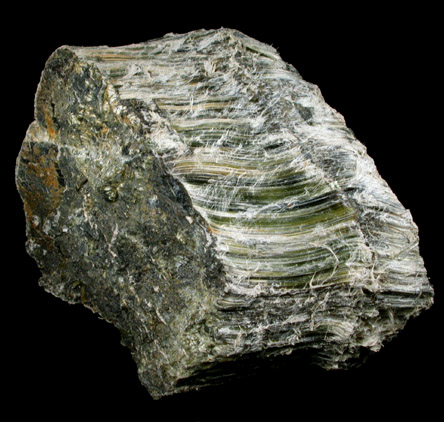
2. Amosite
Next, there is amosite.
“Considered to be the second-most hazardous type of asbestos, amosite – or ‘brown’ – asbestos was mined primarily in South Africa, though commercial production of this variety of asbestos was halted in the last 10 years and the mineral is no longer mined. A member of the amphibole group of asbestos types, amosite is characterized by long, thin fibers that are brittle and break off easily, therefore prompting inhalation.”
Brown asbestos was found in pipe insulation and cement sheet. It was also used in insulating boards. In fact, these sometimes contained as much as 40% asbestos. Other common places in which it was used include thermal insulation and ceiling tiles.
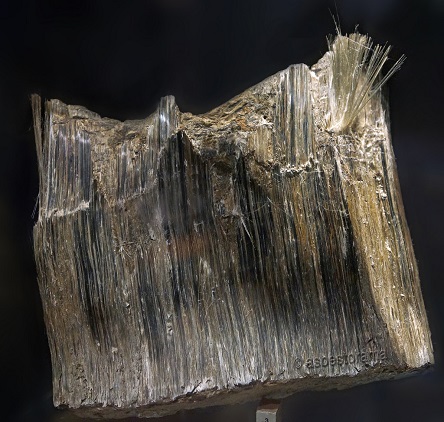
3. Crocidolite
The next type is crocidolite.
“Crocidolite takes the form of blue, straight fibers. It is a sodium iron magnesium silicate, and is considered to be the most dangerous type of asbestos due to its physical properties.”
While the most dangerous type, blue asbestos is also the most heat resistant. It was common in Australia, Bolivia, and South Africa, where it was mainly used on steam engine insulation. Cement products, pipe insulation, and spray on coatings also used it.
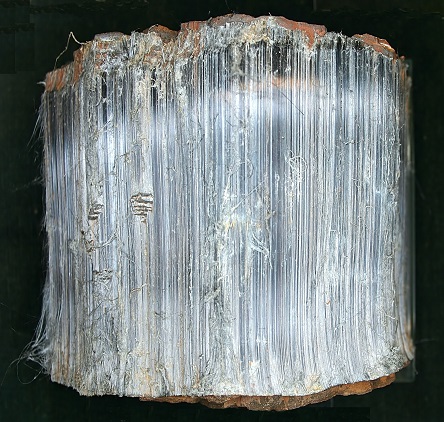
4. Tremolite
The fourth type is tremolite.
“The effects of exposure to tremolite asbestos has not been studied as thoroughly as with other asbestos minerals, but very preliminary research suggests that autoimmune diseases such as psoriasis, lupus, and rheumatoid arthritis sometimes precede the onset of symptoms of tremolite asbestosis and tremolite-induced mesothelioma cancer. Only time will tell if these diseases can be shown to be warning signs for later tremolite asbestos disease.”
Tremolite is not in commercial use. It does, however, contaminate talc powders, vermiculite, and chrysotile asbestos. It can come in a range of colors, or it can be transparent.
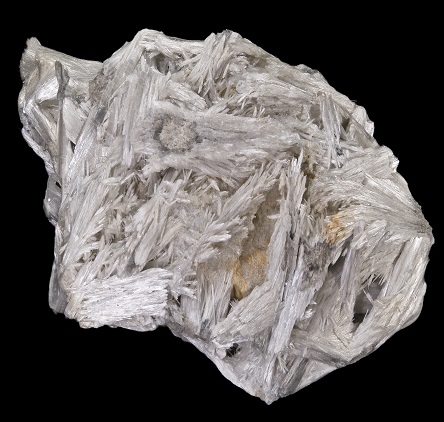
5. Anthophyllite
Anthophyllite is the fifth type of asbestos.
“Anthophyllite asbestos is part of the amphibole group and is characterized by shades of brown, gray and off-white with a chain-like structure to its fibers. Composed of magnesium, iron, silicon, oxygen and hydrogen, anthophyllite forms in large, shapeless crystals that sometimes have streaks of gray which gives it a pearl-like luster. It is found in metamorphic and metasomatic rocks.”
It is found commonly in Finland. Composite flooring would often use it as an ingredient. Other than that, it is mainly a contaminant.
<img class="alignnone size-full wp-image-2964" src="https://www.mesotheliomatreatmentcenters this article.org/media/Anthophyllite.jpg” alt=”Anthophyllite” width=”444″ height=”422″ srcset=”https://www.mesotheliomatreatmentcenters.org/media/Anthophyllite.jpg 444w, https://www.mesotheliomatreatmentcenters.org/media/Anthophyllite-300×285.jpg 300w” sizes=”(max-width: 444px) 100vw, 444px” />
6. Actinolite
Finally, there is actinolite.
“The green color of Actinolite is produced by the iron in its chemical structure. The amount of iron varies among specimens, causing different contrasts of green. More iron will give a specimen a darker color.”
This is quite a harsh form of asbestos and is not very flexible. It never had any commercial use. However, other asbestos products may have been contaminated with it.
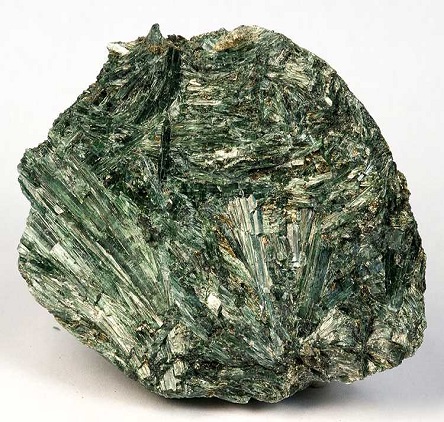
Is Asbestos Always Dangerous?
Some of the forms of asbestos are incredibly dangerous, more so than others. However, there is no single ‘safe’ type of asbestos. All the main health agencies around the world, including those in this country, agree that asbestos as a whole is a strong carcinogenic substance. All of the six types above are linked to serious diseases such as laryngeal cancer, ovarian cancer, lung cancer, mesothelioma, and asbestosis. Some health agencies, including the United Kingdom’s Health Protection Agency, are conducting research to determine which type of asbestos is the most dangerous, with the crocidolite and amosite leading the charts. However, the EPA has abandoned these efforts, focusing more on full regulation of all kinds of asbestos.



